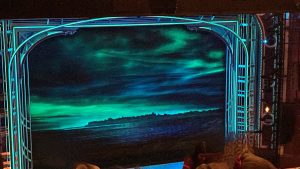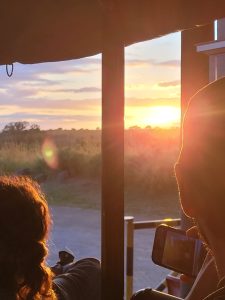Last Sunday, I attended the model fittings for Orlando Fashion Week, an annual event taking place from April 6 to April 9 this year.
The event, held at Baterby’s Art Gallery, will include fashion talks, silent auctions, a kick-off party, an after party, a junior runway competition, and two designer runway shows where designers will compete for the title of best collection.
At the model fittings on Sunday, I was able to see a few of these collections in the works and get an inside look at the behind-the-scenes efforts that go into making a collection. When I walked into the fitting rooms, there were racks upon racks of clothes, many of which were still hidden away safely in garment bags. Designers lingered at the edges of the room, sometimes striking up conversation with one another about the progress on their collections, the number of pieces in their collections, or their hopes for the model fittings.
About fifteen minutes after I arrived at the venue, the models began filtering in, working their way from designer to designer as directed. The first thing I noticed was that the number of models was surprisingly small.
I asked a designer why there were so few girls, considering each designer has at least ten looks per collection, and she explained that the designers are sharing the models because having individual models for every designer would create a nightmare for the hair and makeup artists. To save time, stylists will be doing the models’ hair and makeup in a way that mirrors current styles without being overly dramatic (no bright red lips or intense smokey eyes that could clash with the designers’ clothing) and then each designer has the option to add minimal adjustments to the models before they walk.
In the case of one designer, this means flowered head pieces. For Ciara Rodriguez, who was profiled in my article last week, this means sticking elf ears on all of the models.
As the afternoon continued, I began to look closer at what each model fitting entailed. Only one model was sent to a designer at any given time, at which point the designer considered the size of the girl, measured her, and then handed her an outfit to try on. Some designers had clear plans for which model would wear which garment, while others asked models to try on three or four different looks before deciding what that particular girl would wear.
Once the designers had chosen which outfits a model would be wearing, out came the pins. Most of the designers had yet to finish their garments, purposely leaving out the lining (the inside of the outfit that keeps it from fraying), keeping seams unfinished, and waiting to hem skirts, shorts, and pants.
All of these finishing touches are best left until after the fitting, so that the garment is able to be easily altered to fit the models just right. To mark the clothing for alterations, the designers placed pins in the ends of pants to mark how long they should be or marked with fabric chalk where a neckline needed to be brought down or a sleeve needed to be shortened, etc.
By the end of the day, there were piles of fabric everywhere. All of our charts depicting the list of models were covered in notations, from the shoe sizes of each girl to details on their measurements and the outfits they would be wearing. Though it was clear that all the designers still had a lot of work to do before their collections would be ready to show at Orlando Fashion Week, I can promise that audiences will be in for quite a show when all of the work is done.












Be First to Comment